The secret to influencer relationship management success

Table of Contents
Influencer marketing shouldn’t feel like you’re chasing a revolving door of creators, emails, and spreadsheets. But for many teams, that’s exactly what happens when influencer partnerships end after one campaign.
This is where influencer relationship management (IRM) comes in. It’s the long-game strategy that helps you turn one-off collabs into lasting partnerships.
When done right, IRM supports everything from better engagement to stronger ROI. It builds the kind of trust that keeps collaborators coming back.
What is influencer relationship management (IRM)?
Influencer relationship management is the ongoing process of building, maintaining and improving long-term partnerships with content creators and influencers. It includes everything from finding the right creators and negotiating terms to campaign communication and performance tracking.
And there’s good reason to invest more time and energy into influencers.
Most marketers (90%) agree that influencer content gets more engagement than organic posts and 65% are confident they can prove the ROI of influencer relationships. But without a solid IRM process, that value is hard to sustain over time.
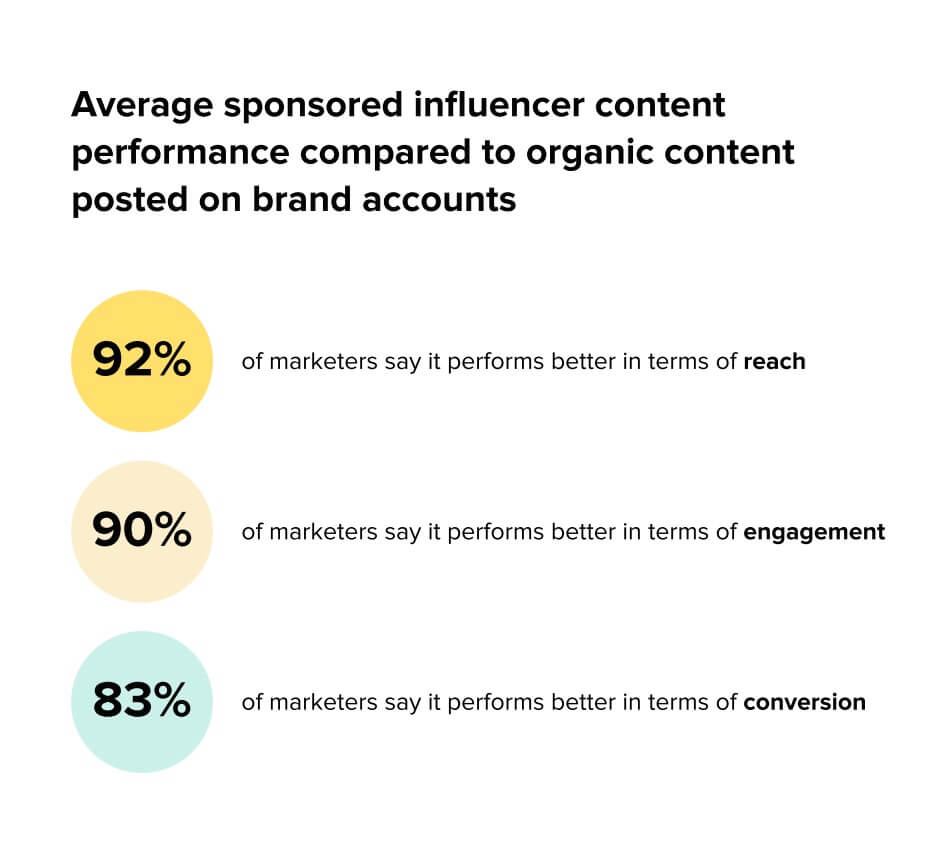
Conventional influencer marketing campaigns are often short-term by design. You find influencers to boost product launches, spotlight promotions or support seasonal campaigns. But the relationship usually ends once the post goes live.
This kind of quick-hit approach can certainly drive awareness, but it rarely builds lasting brand loyalty as the influencer never mentions your product again.
In contrast, influencer relationship management focuses on sustaining relationships that grow in value over time. The goal isn’t just a quick injection of reach or impression. You’re aiming to create customer loyalty from repeat collaborations with content creators who actually influence your target audience.
That shift—from transactional to relational—has a powerful effect on how audiences perceive your brand.
When audiences see their favorite creators using your product over and over, it creates authentic consistency. The content feels less like a paid promo and more like a genuine recommendation. By building trust over time, customers come to believe in your brand, making them more likely to buy.
Strong influencer relations are built on structure. Here’s what makes IRM strategies work.
- Influencer identification and vetting: This element goes beyond the basic influencer search. Instead, you use real-time data to evaluate creator relevance, brand alignment, audience demographics and platform performance.
- Outreach and negotiation: To build authentic influencer relationships, you send out tailored outreach that respects the influencer’s brand. Each negotiation—including deliverables, creative involvement, timelines and rates—is personalized and transparent.
- Contract management and onboarding: You need to set expectations early around usage rights, content guidelines, approval and compensation structures. This helps to kick off the partnership smoothly.
- Relationship nurturing and communication: Regular, meaningful contact keeps creators in the loop. When you share feedback, campaign previews and strategic updates, influencers feel well-informed and invested.
- Performance tracking and reporting: Monitoring content engagement, conversions and influencer reliability helps you inform future campaigns and optimize influencer relationships.
- Payment: Timely compensation keeps influencers content, so the relationship stays strong.
- Compliance: Influencer marketing often has to comply with stringent regulations. You need to manage usage rights while meeting all regulatory and platform-specific disclosure guidelines.
Why should you focus on influencer relationship management?
Ongoing influencer relationships give you a strategic advantage. Influencer relationship marketing management helps you build deeper trust, increase performance and scale your creator partnerships with intention.
By shifting your focus from short-term wins to long-term impact, you’ll see more tangible, trackable results. But this trust isn’t built overnight. It’s earned through authentic content and sustained creator connections—two pillars that make IRM so effective.
Authenticity = trust
Authenticity is important to consumers. Our 2025 Influencer Marketing Report found that 47% of consumers expect influencer posts to feel genuine, even if they’re sponsored posts.
You don’t get that kind of trust from one-off campaigns. Not only does this content feel scripted, but if the creator never mentions the product again, watchers won’t believe they use or support it.
Trust comes from sustained creator relationships. IRM gives creators the time and space to genuinely connect with your product and show their audience how it fits into their real lives. That ongoing presence creates consistency and memorability—it gives audiences more opportunities to see, trust and recall your brand.
Plus, continual endorsement signals that the creator actually uses and values your product. And if you’ve built the right relationship, they will. That’s what makes the content feel honest and trustworthy—it’s not just a convincing ad. It’s real.
Consistency = conversions
Influencer marketing is a proven driver of revenue. Half of consumers say they make a monthly purchase based on an influencer’s recommendation, according to the Sprout Influencer Marketing Report.
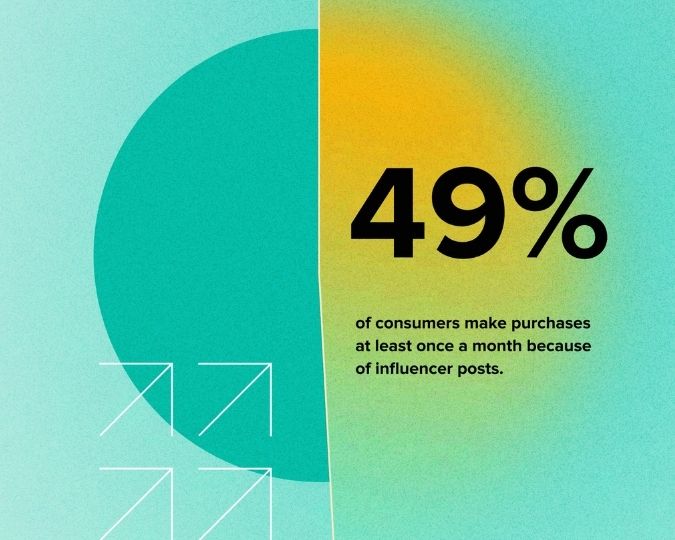
With IRM, you capitalize on the momentum of these recommendations. When creators consistently share your product in ways that feel natural to their audience, they’re nurturing highly targeted leads. This repetition builds familiarity, reinforces trust and keeps your brand top of mind. So when it’s time to buy, you’re already on the shortlist.
Less chaos = scalability
Whether you’re a social media manager running multichannel campaigns, juggling affiliates or scaling user-generated content (UGC), IRM gives you the infrastructure to grow with intention.
An influencer relationship management software platform streamlines the entire process. It helps you organize communications, manage contracts and payments and track performance—all without losing the personal connection that makes influencer content work.
5 steps to create high-impact influencer partnerships
Building strong influencer relationships doesn’t happen by accident. It takes intention, structure and consistency.
Here’s a quick step-by-step guide to show you how to set your program up for long-term success.
Sprout Tip
1. Identify objectives and audience alignment
Before reaching out to any creator, clarify what success looks like for your brand. Are you aiming to drive conversions? Build brand awareness? Create high-performing UGC?
Knowing your goals makes it easier to identify creators who align with your brand and your audience.
The clearer your objectives and ideal personas are, the easier it is to search for the right creators. Having that context—like audience demographics, content style or campaign goals—helps you filter more effectively and avoid wasting time on creators who aren’t the right fit.
2. Search for relevant influencers
Finding the right influencers isn’t about chasing the biggest follower count. It’s about identifying creators who genuinely connect with your audience and deliver real engagement.
And relevance starts with values. The most effective influencers are those whose personal brand aligns with yours and your customers’ values. In fact, “shared values” is the top quality consumers look for in an influencer, according to data from Sprout’s Influencer Marketing Report.
And creators feel the same. When picking partnerships, the most important factor is whether those brands reflect their beliefs.
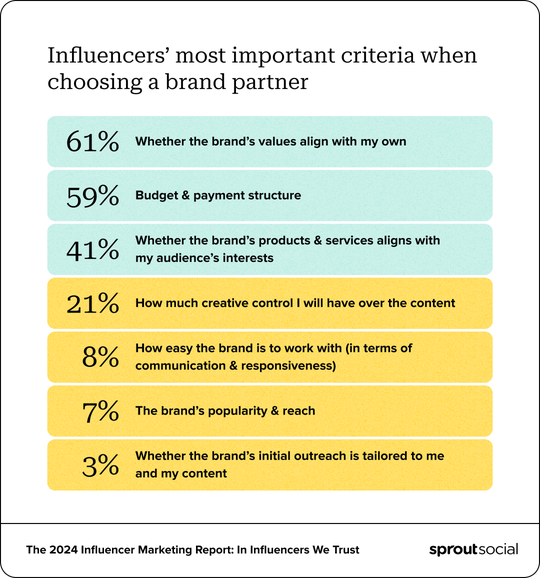
Value-based alignment creates the kind of harmony to drive sales. The creator feels confident sharing your product, so the content reflects your brand authentically. As a result, the audience is more likely to trust what they see and buy into it.
But how do you begin your influencer search?
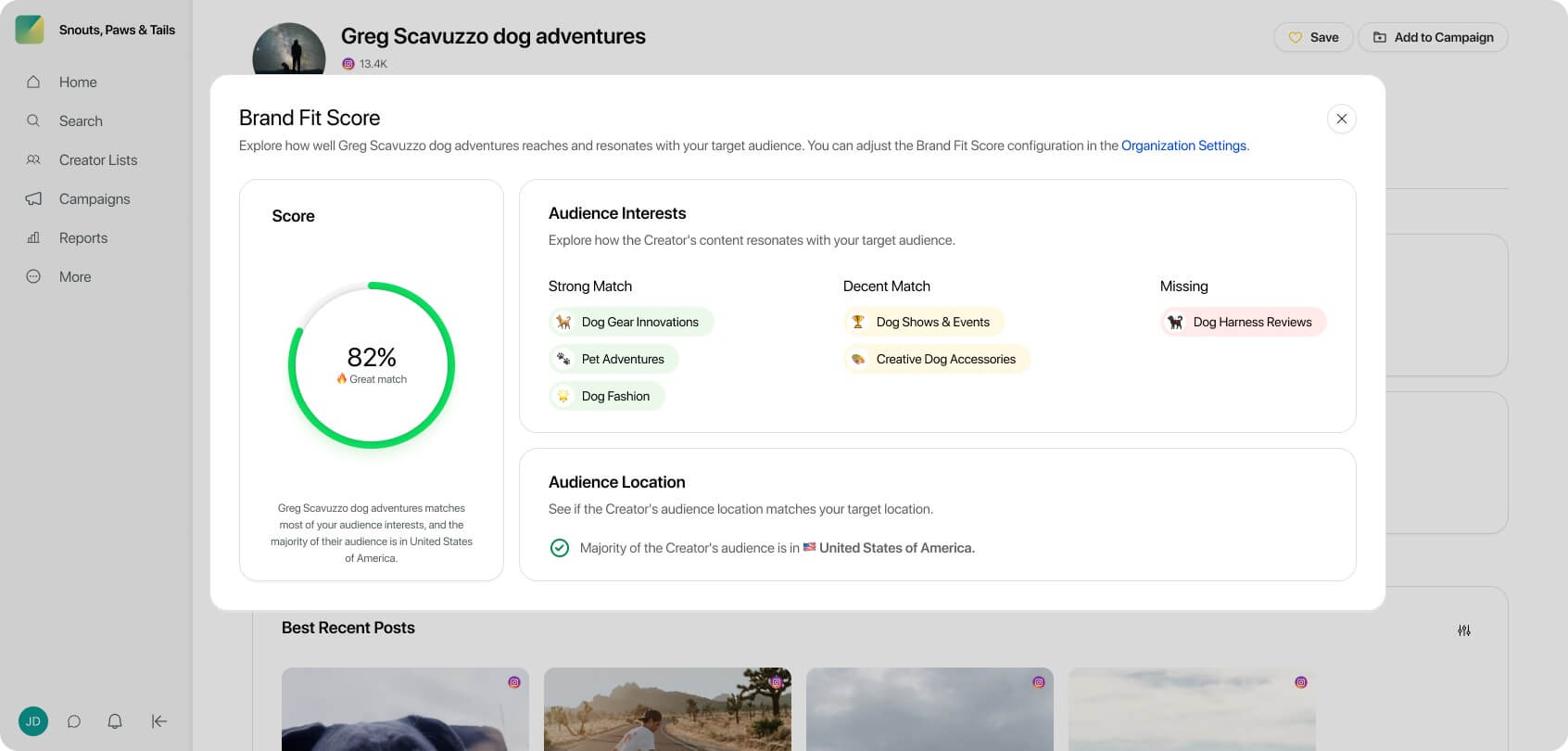
Sprout Social Influencer Marketing makes influencer discovery easy. You can filter potential partners by niche, audience demographics, engagement rate and brand safety. With these insights, you go beyond surface-level stats to find creators who naturally fit your brand and workflows.
3. Outline clear expectations
Clear communication is the backbone of every strong influencer marketing strategy. Set expectations around campaign goals, timelines, content formats, creative direction, pricing and deliverables before any work begins.
When you outline expectations, you’re not just protecting your brand. You’re also respecting the creator’s time and creativity.
Most influencers prefer clarity on usage rights, deadlines and compensation upfront. According to Sprout’s Influencer Marketing Report, 71% of influencers offer lower rates for long-term partnerships and are open to negotiating discounts for multipost campaigns.
Influencer Marketing by Sprout Social offers contract templates and centralized campaign briefs to help you maintain consistency so everyone’s on the same page from day one. This makes onboarding smoother and faster, especially when working with new influencers.
4. Foster ongoing communication and collaboration
Trust is the glue that holds influencer marketing programs together. Consistent, open communication throughout influencer campaign management reinforces that trust and encourages future collaboration.
Don’t go silent between campaigns. Staying in touch keeps the relationship flowing and shows creators they’re valued beyond a single post. Follow up with product updates, preview upcoming launches and keep them in the loop with what’s new.
But communication isn’t a one-way street. Influencers offer value beyond simply acting as a messenger for your brand. By communicating performance insights and inviting them to brainstorm new ideas, you can leverage their creative freedom and audience knowledge to strengthen future campaigns.
This level of involvement is exactly what influencers are looking for. Our Influencer Marketing Report found that 35% of influencers want earlier involvement in creative brainstorming, while 30% say being included in product development would deepen partnerships.
But managing influencer conversations across scattered tools slows everything down. Instead, Sprout Influencer Marketing brings all creator communication, feedback and asset sharing into one centralized platform. You get streamlined workflows, better organization and forward-moving campaigns that maintain momentum.
5. Measure performance and ROI
Your influencer marketing efforts should drive results. You need to look beyond surface-level metrics such as likes and impressions. To measure performance effectively, you need insight into both individual campaigns and the overall partnership.
Campaign metrics might include reach, saves, shares and conversions. But your IRM metrics should also look at relationship indicators—like response rates, rebooking frequency or how often influencers refer other creators your way.
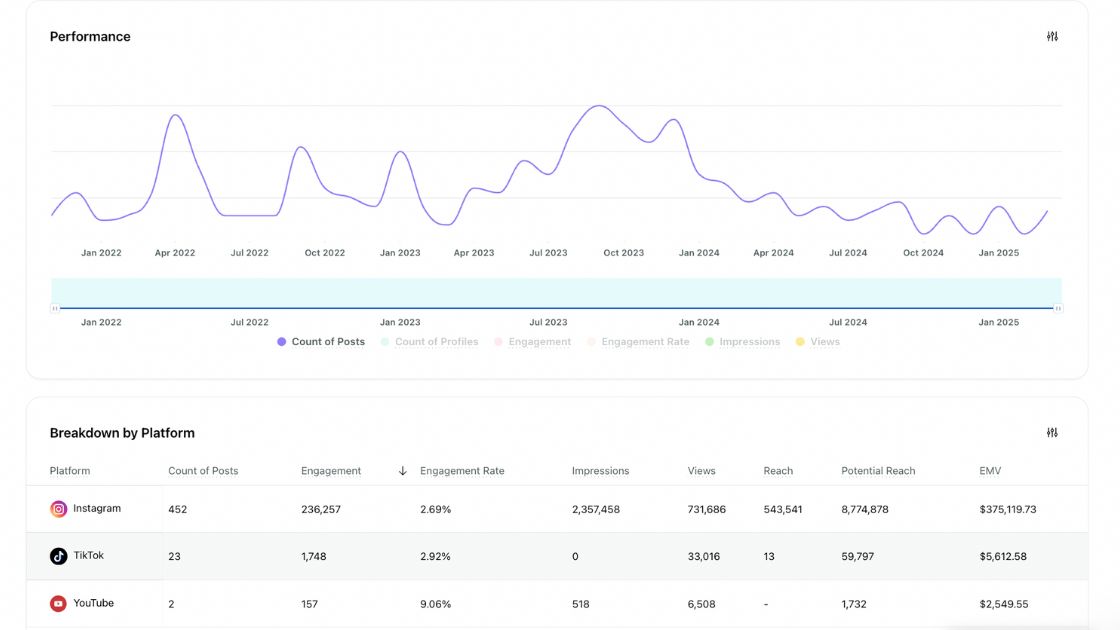
Sprout Influencer Marketing gives you a clear, real-time view of influencer performance at both the campaign and partnership levels. You can track everything from affiliate code redemptions and e-commerce conversions to platform-specific engagement and follower growth.
This level of insight helps you understand which creators drive results, which messages resonate and how influencer content contributes to broader business goals.
How to measure the success of your influencer relationship management initiatives
To truly understand the value of your IRM strategy, you need to measure engagement quality, relationship health and long-term ROI. These metrics help you refine your influencer marketing strategy, justify spend and scale what’s working.
Engagement quality
Don’t just focus on likes or follower count. Track deeper signals like saves, meaningful comments, click-through rates and video completion. These metrics show the content that prompts action.
Whether you’re partnering with micro-influencers or famous creators, high-quality engagement helps you identify the best influencer relationships to build upon. Add social listening to the mix, and you’ll get a fuller picture of brand sentiment and content impact beyond each individual post.
Relationship signals
Strong influencer relationships lead to powerful results. Don’t simply monitor creator content—measure creator engagement as well.
Track creator responsiveness, re-engagement rates and whether influencers bring ideas or refer others. These behaviors signal long-term potential and true brand alignment.
Using an influencer marketing platform with a built-in influencer database can help you automate this process and scale relationship insights without losing the human element.
Campaign ROI
Finally, measure outcomes that tie directly to business goals. Monitor affiliate lift, conversions and overall reach versus results. This shows you which creators deliver and which strategies drive growth.
With the right data, your influencers become a revenue-driving engine—not just a content channel.
How Sprout Social helps with influencer relationship management
As your influencer marketing program grows, it becomes tough to manage everything manually. Sprout’s Influencer Marketing solution helps you streamline every stage of IRM in one centralized platform. That way, you can scale your strategy without losing the personal connection.
Discover and vet aligned influencers
AI-powered search and filtering tools help you identify creators who align with your brand’s values and audience.
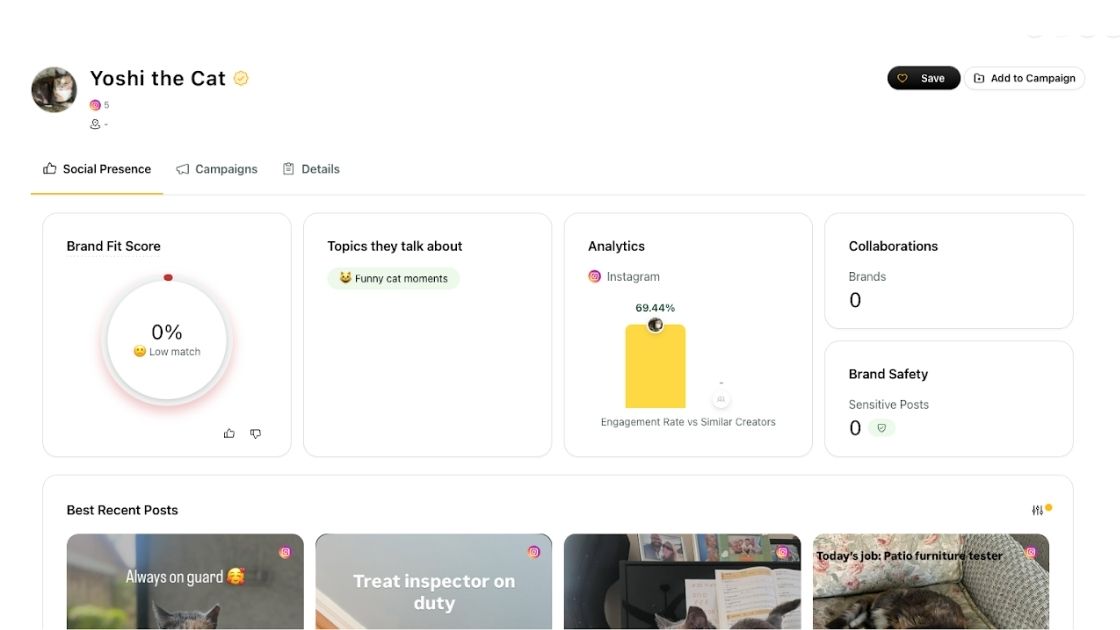
Pair these capabilities with Sprout’s performance insights and audience data to assess how well their content converts, how their audience engages and whether their style lines up with the kind of messaging you want to use to express your brand identity.
Centralize communication and campaign assets
Sprout brings everything together—briefs, contracts, messaging and feedback—so you can manage each relationship without jumping between tools. With everything in one place, it’s easier to collaborate, assess the direction and value of the relationship and respond in real time.
Track performance and build lasting partnerships
Real-time analytics connect influencer activity to business outcomes. Measure campaign ROI and spot high-performing partners so you can double down on what works. These insights show you how to grow the relationship—and what content will actually move the needle.
Why influencer relationship management matters for your brand
Influencer marketing is no longer a side tactic—it’s a key part of any modern digital marketing strategy. But as the space matures, so do expectations.
Creators want to work with brands that respect their creativity, pay fairly and collaborate with transparency. Audiences want content that feels personal, useful and real. And you need the infrastructure to meet both expectations and scale responsibly.
This is why IRM is the most valuable investment you can make to grow fruitful influencer relationships.
Ready to build influencer relationships that last? Book a demo of Sprout Influencer Marketing.


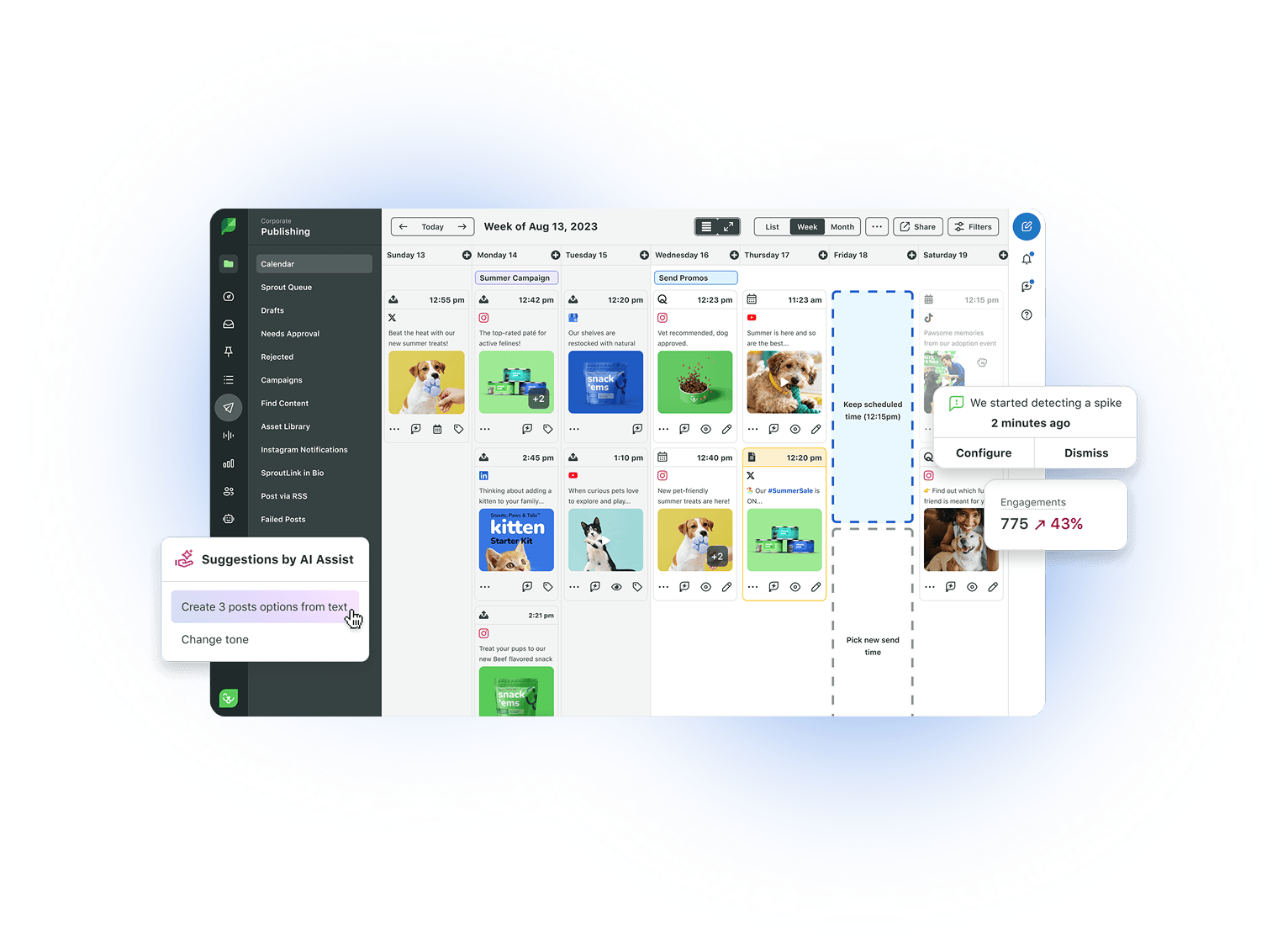
Share